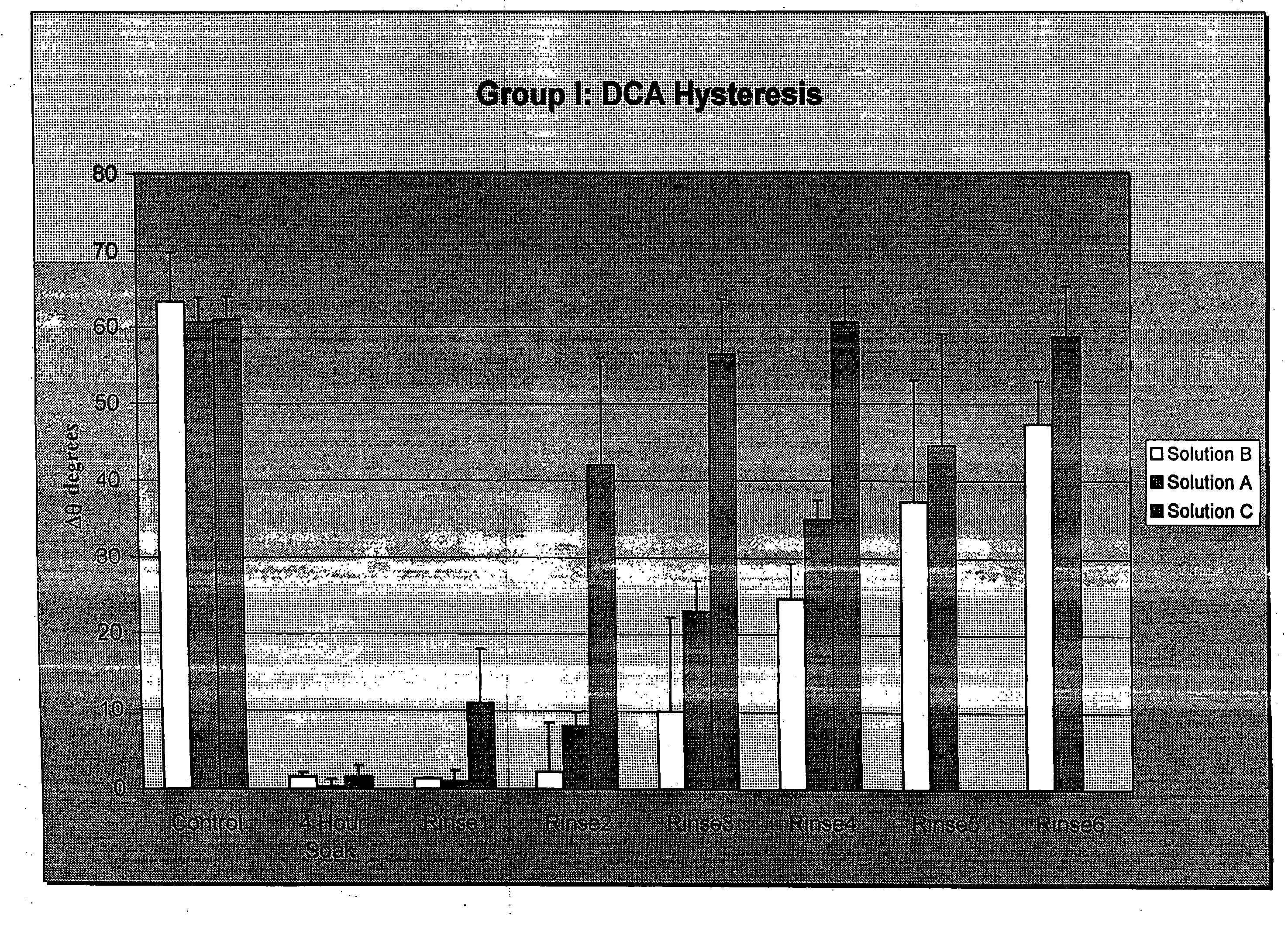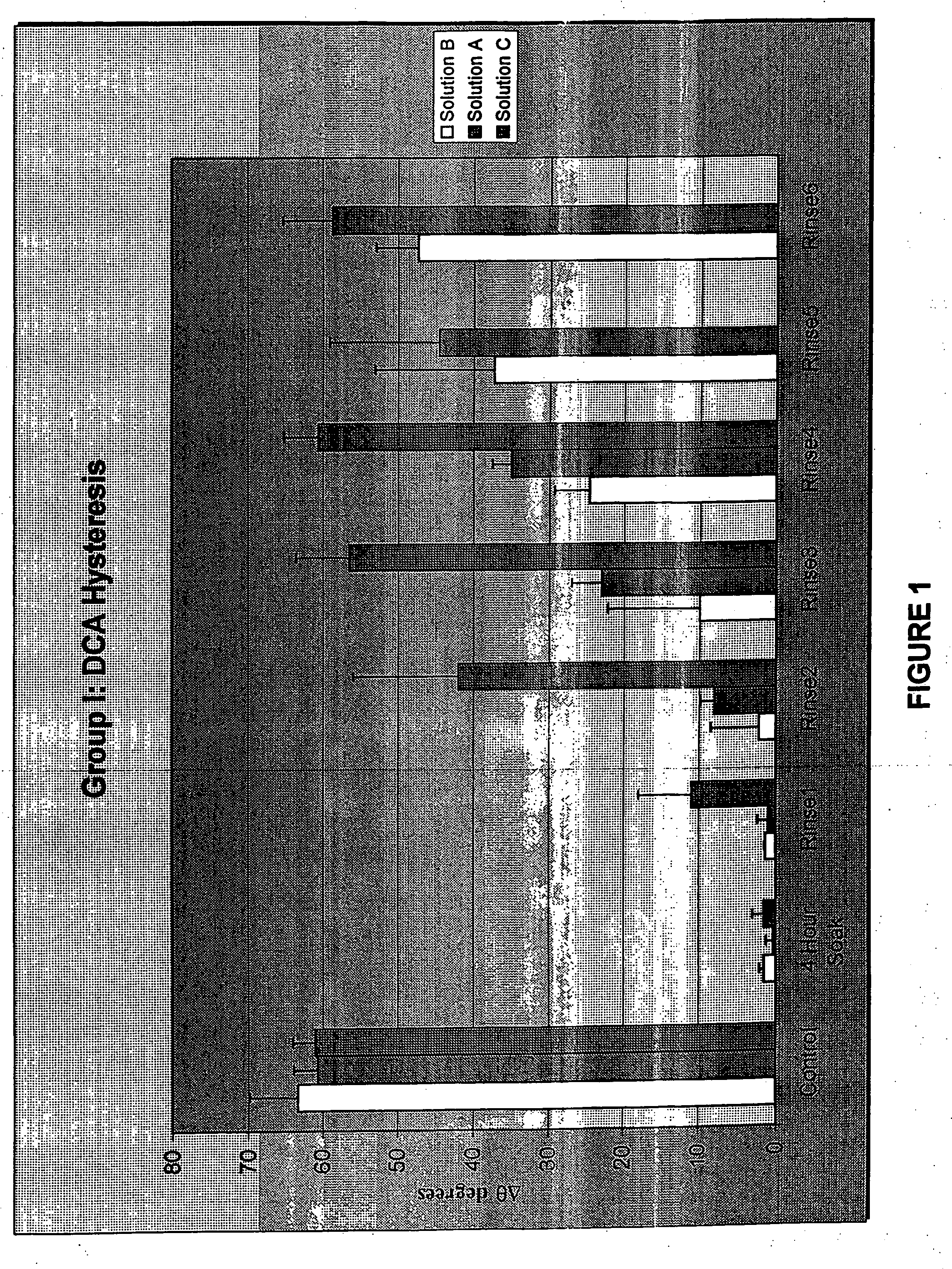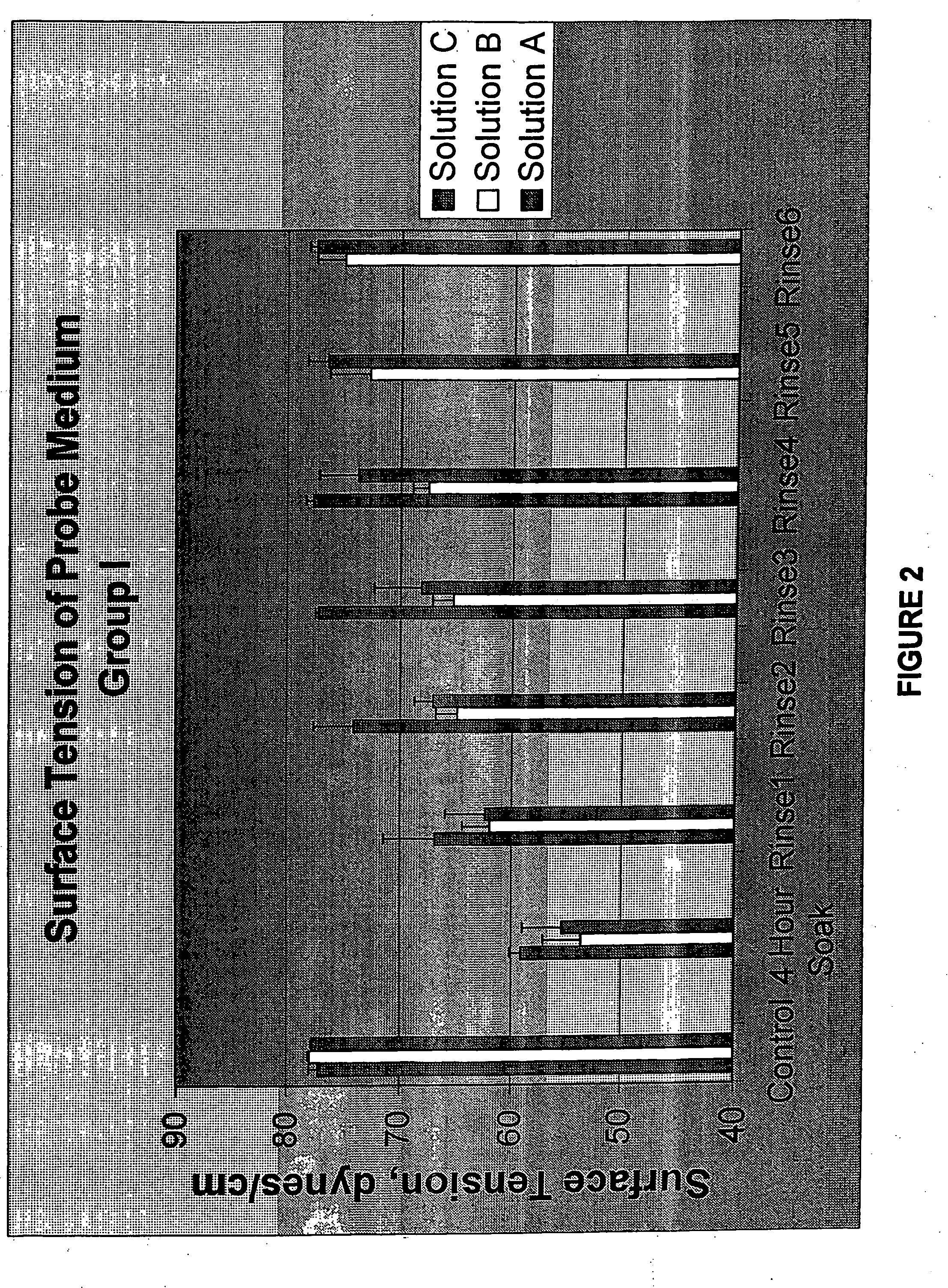Method and composition for contact lenses
a technology of contact lenses and composition, applied in the field of ophthalmic solutions, can solve the problems of reducing visual acuity, not desirable to alter the dimensions of contact lenses from the manufacturer's finished product specifications, etc., and achieve the effects of improving lubricity, improving initial and end-of-day comfort, and prolonging wetting performan
- Summary
- Abstract
- Description
- Claims
- Application Information
AI Technical Summary
Benefits of technology
Problems solved by technology
Method used
Image
Examples
example 1
[0051] A. Sample preparation
[0052] Group I: HEMA films were UV cast polymerized around a square glass cover slip to provide a flat substrate for conducting a dynamic contact angle study. The dimensions of the prepared substrates were 22 mm×22 mm×0.25 mm. The substrates were extracted in hot deionized water for two hours.
[0053] Group IV: The ionic monomer mix was UV cast polymerized around a rectangular fluorosilicon acrylate wafer to provide. a flat substrate for the dynamic contact angle study. The dimensions of the substrate were approximately 12 mm×25 mm×1 mm. The substrates were extracted in phosphate buffered saline (PBS) overnight at 37° C.
Phosphate buffered saline =sodium phosphate (monobasic) 0.016%sodium phosphate (dibasic) 0.066%sodium chloride 0.88%deionized water93.038%
[0054] B. Dynamic Contact Angle Study
[0055] Group I: Each HEMA substrate was suspended inside a CAHN DCA 315 apparatus. Dynamic contact angles and the contact angle hysteresis were measured using the ...
example 2
[0064] A. Lens materials
[0065] Two materials were used in the subject continuous release of polyethers from various lens materials study as described below. [0066] Group I: Optima™ FW (−3.25 D) (Bausch & Lomb) [0067] Group IV: SureVue™ (−7.00 D) (Johnson & Johnson)
[0068] B. Solutions
[0069] The solutions used in the subject continuous release of polyethers from various lens materials study are set forth below in Table 3.
TABLE 3SolutionAbbreviationBase solutionBSBase solution + Polymer JRBS + PJR1% Tetronic 11071% T1% Pluronic F1271% P1% Tetronic / Pluronic1% T / P5% Tetronic 11075% T5% Pluronic F1275% P5% Tetronic / Pluronic5% T / P
[0070] C. Procedure
[0071] Lenses of Group I and Group IV type were soaked for four hours in the various polyether solutions. The lenses were then removed and placed in a lens basket designed to receive a continuous infusion of phosphate buffered saline (PBS). A micro-infusion pump delivered 3.8 μl / min of PBS continuously to the lens surface for 18 hours to s...
example 3
[0075] A. Lens materials
[0076] Three materials were used in the subject continuous release of wetting agents from various lens materials study as described below. [0077] Group I: Optima™ FW (−3.25 D) (Bausch & Lomb) [0078] Group III: PureVision™ (−5.75 D) (Bausch & Lomb) [0079] Group IV: Surevue™ (−7.00 D) (Johnson & Johnson)
[0080] B. Solutions
[0081] The multipurpose solutions used in the subject continuous release of wetting agents from various lens materials study are set forth below in Table 4.
TABLE 4SolutionComponentsWeight PercentABoric acid0.85Sodium Phosphate (Monobasic)0.15Sodium Phosphate (Dibasic)0.31Sodium Chloride0.26HAP (30%)0.10Tetronic 11071.00Pluronic F1272.00Polymer JR0.02PHMB (20%)1.1 ppmB includingTetronic 11071.00
[0082] C. Procedure
[0083] Various group type lenses were soaked for four hours in the test solutions A and B. The lenses were then removed and placed in a lens basket designed to receive a continuous infusion of phosphate buffered saline (PBS). A m...
PUM
 Login to View More
Login to View More Abstract
Description
Claims
Application Information
 Login to View More
Login to View More - R&D
- Intellectual Property
- Life Sciences
- Materials
- Tech Scout
- Unparalleled Data Quality
- Higher Quality Content
- 60% Fewer Hallucinations
Browse by: Latest US Patents, China's latest patents, Technical Efficacy Thesaurus, Application Domain, Technology Topic, Popular Technical Reports.
© 2025 PatSnap. All rights reserved.Legal|Privacy policy|Modern Slavery Act Transparency Statement|Sitemap|About US| Contact US: help@patsnap.com



